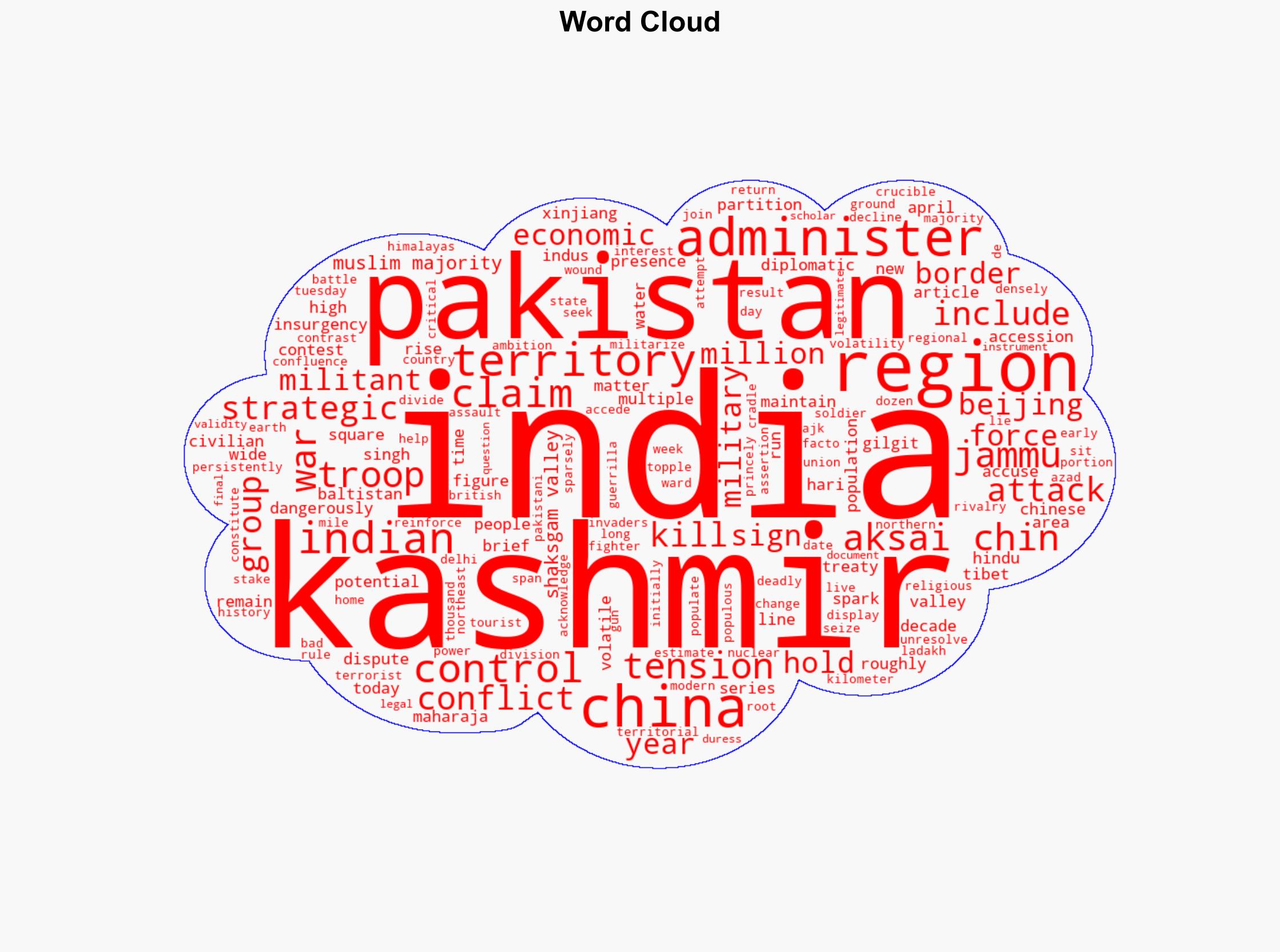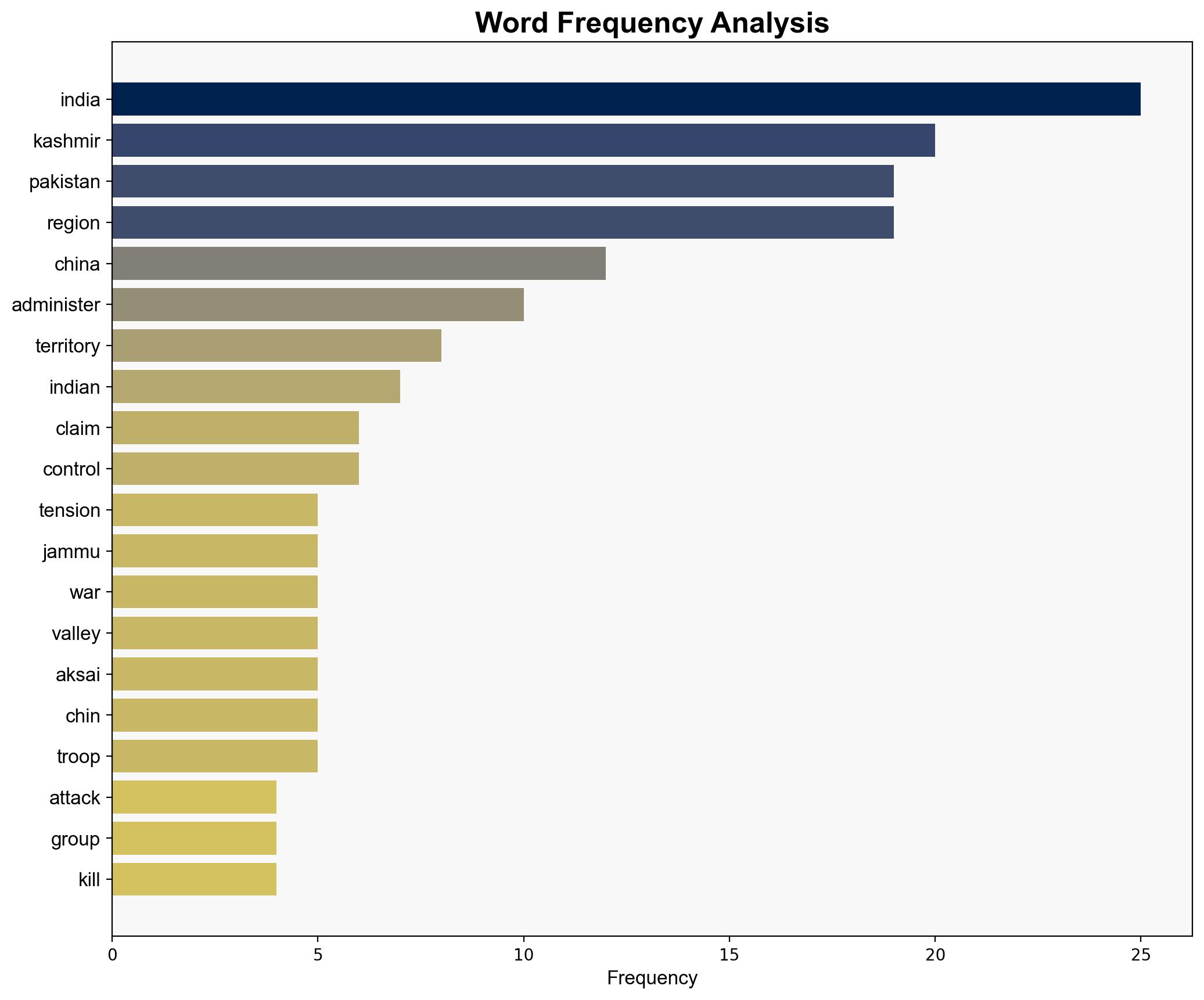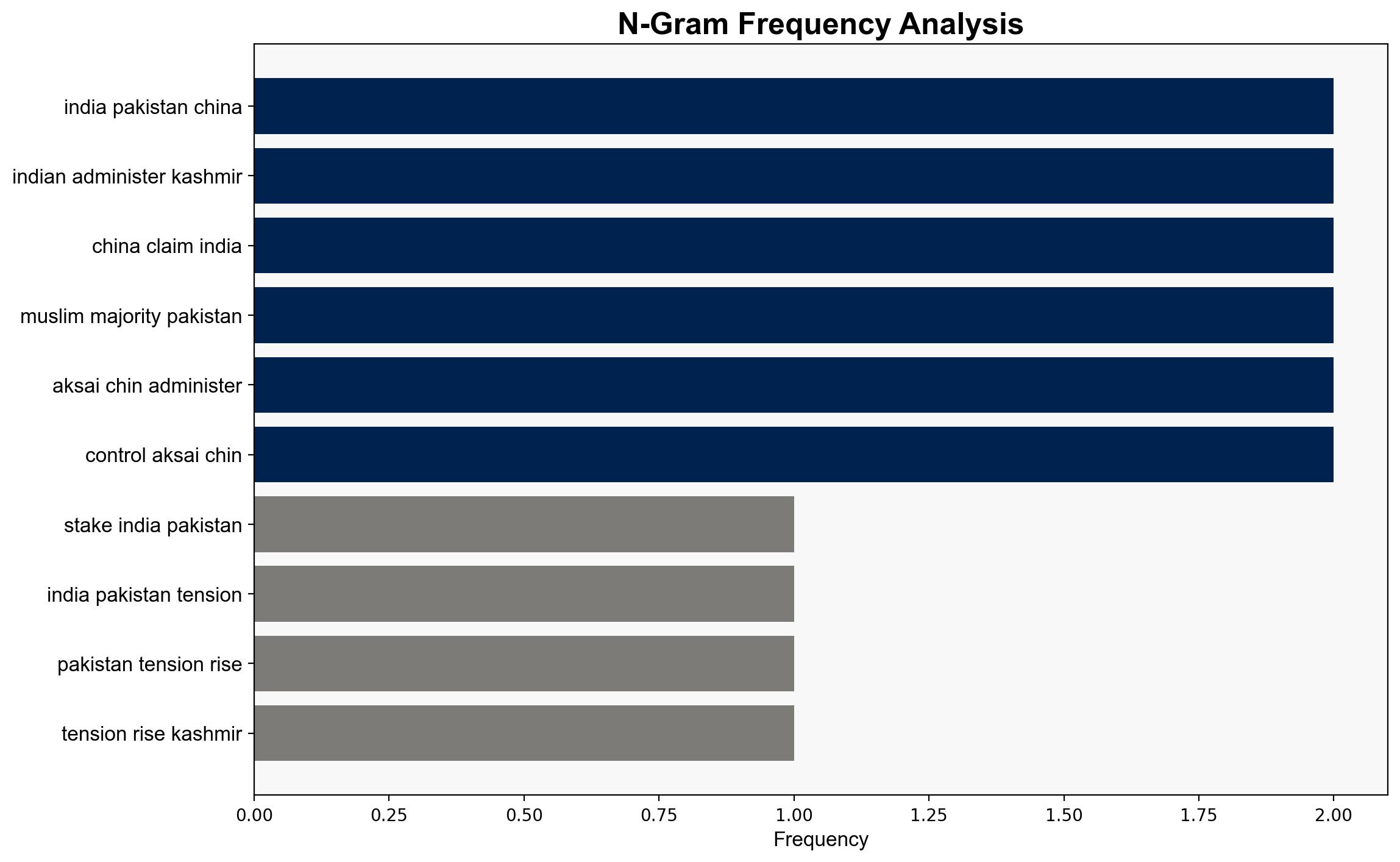What’s at stake as India-Pakistan tensions rise in Kashmir – DW (English)
Published on: 2025-04-25
Intelligence Report: What’s at stake as India-Pakistan tensions rise in Kashmir – DW (English)
1. BLUF (Bottom Line Up Front)
The Kashmir region remains a flashpoint for conflict between India and Pakistan, with recent militant attacks exacerbating tensions. The strategic importance of the area is underscored by its geopolitical significance, involving China as a third stakeholder. Immediate diplomatic engagement and confidence-building measures are recommended to prevent escalation and stabilize the region.
2. Detailed Analysis
The following structured analytic techniques have been applied to ensure methodological consistency:
SWOT Analysis
Strengths: Strategic location with access to critical trade routes and resources.
Weaknesses: Persistent political instability and unresolved territorial claims.
Opportunities: Potential for economic development through regional cooperation and infrastructure projects.
Threats: Risk of military escalation and insurgency activities.
Cross-Impact Matrix
The interplay between regional military posturing, economic initiatives like the China-Pakistan Economic Corridor (CPEC), and diplomatic relations creates a complex security environment. Increased military presence by China and India could lead to heightened tensions, impacting regional stability.
Scenario Generation
Best Case: Diplomatic resolution of territorial disputes leads to regional cooperation and economic growth.
Worst Case: Full-scale military conflict involving nuclear powers, resulting in significant regional and global instability.
Most Likely: Continued low-intensity conflict with periodic escalations, requiring ongoing international mediation.
3. Implications and Strategic Risks
The region’s volatility poses risks to international trade routes and energy supplies. Cybersecurity threats may increase as state and non-state actors exploit the conflict. The potential for a nuclear confrontation remains a critical concern, necessitating robust diplomatic interventions.
4. Recommendations and Outlook
- Facilitate dialogue between India, Pakistan, and China to address territorial disputes and reduce military tensions.
- Enhance intelligence-sharing mechanisms to counter terrorism and insurgency activities.
- Promote economic initiatives that benefit all stakeholders, reducing incentives for conflict.
- Scenario-based projections suggest that proactive diplomatic engagement is essential to prevent escalation.
5. Key Individuals and Entities
Notable individuals include Narendra Modi, Imran Khan, and Xi Jinping. Their roles in shaping national policies significantly impact regional dynamics.
6. Thematic Tags
(‘national security threats, cybersecurity, counter-terrorism, regional focus’, ‘cybersecurity’, ‘counter-terrorism’, ‘regional focus’)





